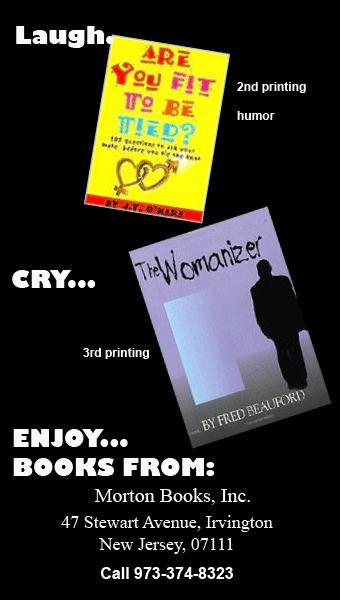REVIEWING
Shadow Tag
by Louise Erdrich
Harper Collins | 2010 { 255 pages } $25.99
Reviewed by Sally Cobau
In Louise Erdrich’s newest book, Shadow Tag, the reader is privy to a fictional diary (actually two fictional diaries, but I’ll get to that in a moment); what we are not privy to in real life are court documents relating to the accusations that Michael Dorris, Erdrich’s estranged husband at the time, sexually abused one of their children.
This book is primarily about two things—escape and possession. It circles around the characters of Irene and Gil, a married couple, but also shines its lens on the couple’s children—Florian, Riel, and Stoney. The children are essential here, for without them Irene would leave. It is for their well-being that she stays in a relationship that is destructive and floundering, putting on a face of “normalcy.” Yet the relationship is not wholly one-sided—Irene is ambivalent about escaping and is caught in a narcissistic web, fueled by her own dark impulses. It might seem reductive to compare the muse-artist relationship here to any other abusive relationship, but all the “red flags” are present in the story—the verbal jags, the violence, and the abuser’s hyperbolic idea of redemption. In this case, Gil wants to grant one wish—any wish—to all four of his beloved family. The six-year-old wants a cloud, the idealistic daughter wants “world peace,” and the eldest, Florian, wants to play hockey. All these wishes are granted—an artist is commissioned to paint clouds; father and daughter go to peace rallies; and expensive hockey equipment is purchased. But what does the wife want?
“I want you to leave,” says Irene.
This is one wish—the ultimate wish—that Gil refuses to grant. Instead he thinks that perhaps what Irene needs is a surprise party! She accepts the party with a shrug and a glass of wine. Throughout the book, alcohol is a constant companion, easing the impossible restraints Irene feels. In fact, her wine glass is so omnipresent that when Stoney, her six-year-old, draws a portrait of his mother, he attaches a half-moon (or wine glass) to her hand.
Gil is a famous painter—as a Native American he uses his Native American wife, Irene America, as his muse and model. At first flattered by his obsession with her (he paints her before they are married), by the time of the story, Irene has a more complicated relationship to the paintings. It seems that she is the only subject of his paintings and although he captures the tenderness of love in his work, he also depicts Irene with frank brutality: “Irene America was over a decade his junior and had been the subject of his paintings in all of her incarnations—thin and virginal, a girl, then womanly pregnant, naked, demurely posed or frankly pornographic. He’d named each portrait after her. America 1. America 2. America 3. America 4 had just sold in six figures.”
I don’t know if Erdrich was Michaels Dorris’ muse, but she was certainly his collaborator, and they wrote several books together. Before meeting Erdrich, Dorris was a successful writer on his own. He was also famous for being the first man in the United States to adopt a baby as a single father, a fetal alcohol-inflicted son, who became the subject of Dorris’ much-lauded book, The Broken Cord.
Dorris was Erdrich’s teacher and encouraged her to get published. They had children together, adopted others, and had extremely successful careers. But then, in the end, their relationship imploded. Accused of molesting his daughter(s), Dorris ended up committing suicide after separating from Erdrich. Perhaps the weight of being “The Native American literary couple” and “spokespeople” for a generation was more than he could handle, or maybe Dorris was jealous of Erdrich’s career, whose ascent seemed limitless (her recent book The Plague of Doves was a finalist for the Pulitzer Prize). Erdrich’s gifts are rare and her ability to reach a large audience remarkable. Her stories are complex, multi-generational, and highly unpredictable.
The structure of Shadow Tag is simpler than her previous work, though she still tells stories-within-stories. This novel seems distilled, pure at its core, with achingly precise language. One structural device is her use of diaries. In the story, Irene has two—one “real” diary, the blue diary that contains the truth and another diary, the red diary, which is full of innuendo and red herrings and is purposely left out for Gil to read. Irene leaves clues in her imagined red diary, teasing and manipulating Gil, who feels tortured by the made-up confessions. At one point, Irene writes in the red diary, amidst the banality of colds and children’s homework, “I think I’m going to lose my mind over what I’m doing.” Gil reads this and practically goes mad. He has no idea what his wife is supposedly doing, but imagines the worst: “He actually thought he could feel the blood drain from his heart when he read those words. I think I’m going to lose my mind over what I’m doing.” He imagines an affair, but what she is doing is trying to hurt him. There is no other man; in fact Irene seems frozen, cut off from everyone outside her family.
The claustrophobia of family life is captured here as well as simple, ritualistic details—dinners are made (healthful concoctions with walnut-pear salads) and popcorn is eaten in front of the TV, but underlying the fecund beauty of family life lurks tragedy and violence. Erdrich writes, “Gil loved his family with a sort of despairing devotion, for he knew that on a fundamental level they shrank away from him. Their petting smiles, their compliments, their contrived laughter. Sometimes he believed they meant these things. Sometimes he knew they were afraid of him.” Indeed, his rage turns to violence. He hurls an empty vodka bottle out of his studio window at Irene, he hits his eldest (Irene takes a photo to document this), and Irene even imagines him murdering her when she’s lying on the tub and he knocks on the door. This passage is so eerie and frightening, almost propelling the book into a psychological thriller (and indeed, Erdrich said of Shadow Tag that she intended to write a suspense novel).
Is it fair to look into a book, searching for clues to the author’s psyche or autobiography? In most cases I would say no, let the book stand on its own. But this book begs itself for interpretation and guess work. Just as Gil tries to interpret what the line, I think I’m going to lose my mind over what I’m doing means, I found myself reading between the lines, trying to sort out Erdrich from Irene and Dorris from Gil. The doubling in the book is maddening, complex, and ultimately satisfying. There is also the tease in the book of having a character called “Louise,” like Louise Erdrich herself. This Louise ends up being Irene’s half-sister. She is portrayed as the only person who can save Irene. Is Erdrich whispering to herself, Save me? As I read along, I thought of other literary couples with entangled, messy relationships, but none stuck out more in my mind than Fitzgerald and Zelda. I was surprised, but not overly so, it just seemed right, when Erdrich nods to them and their tragedy in her book.
Although perspectives shift in Shadow Tag, I felt my full alliance fall with Irene and felt little sympathy for Gil. In the end, one of the children has the last word, making the story seem all the more fractured, as if the story we are told is just one version of many, a glittering shard of a broken mirror.
Recently, I listened to an interview with Louise Erdrich by Bill Moyers. She talks about being both a mother and writer and how she steals away whenever she can to write. She says, “I live on the margin of just about everything.” Sadly, in Shadow Tag, Irene does not escape the fractured, toxic relationship that is slowly strangling her; thank God in real life, one of our national treasures, Louise Erdrich, does.





